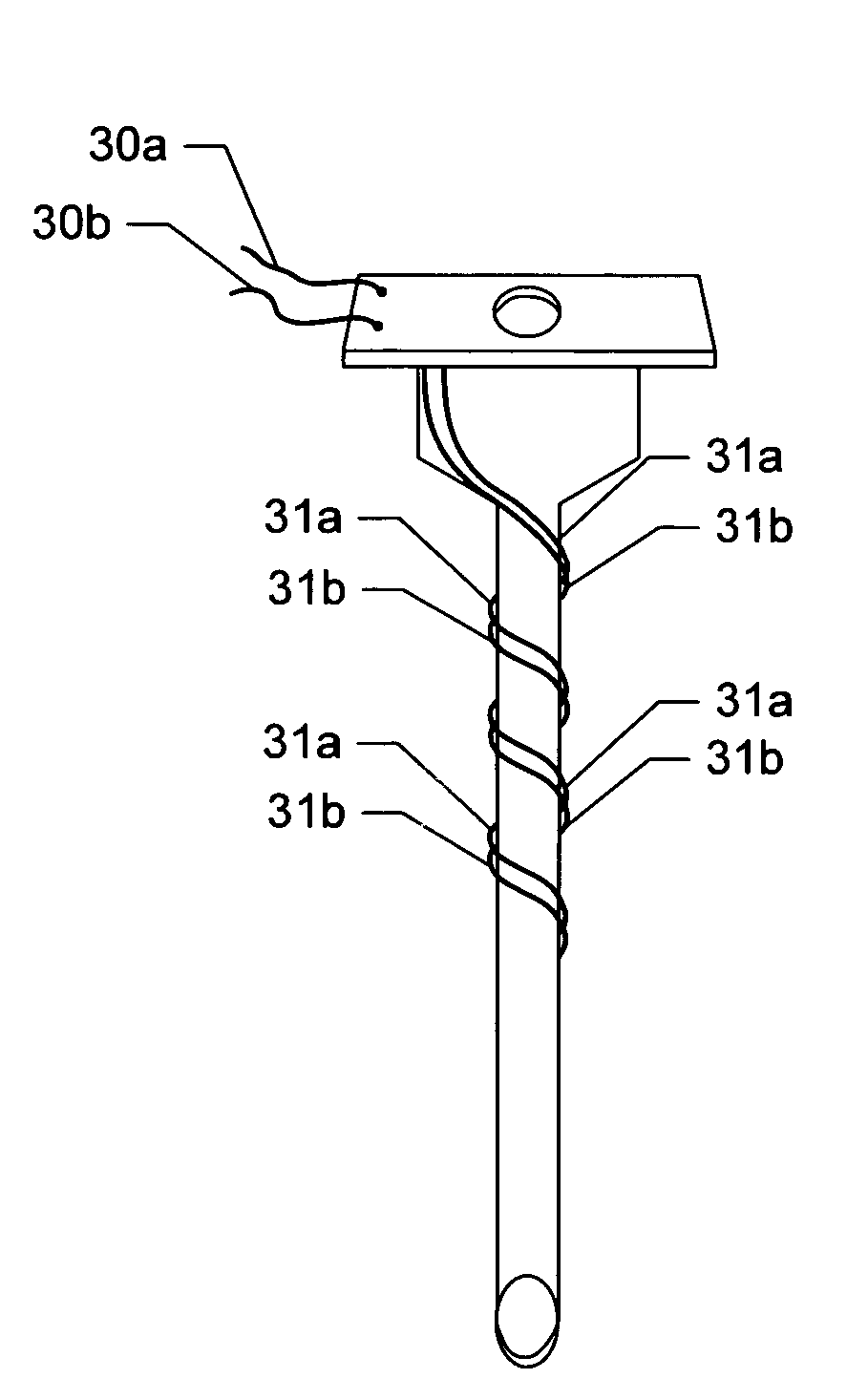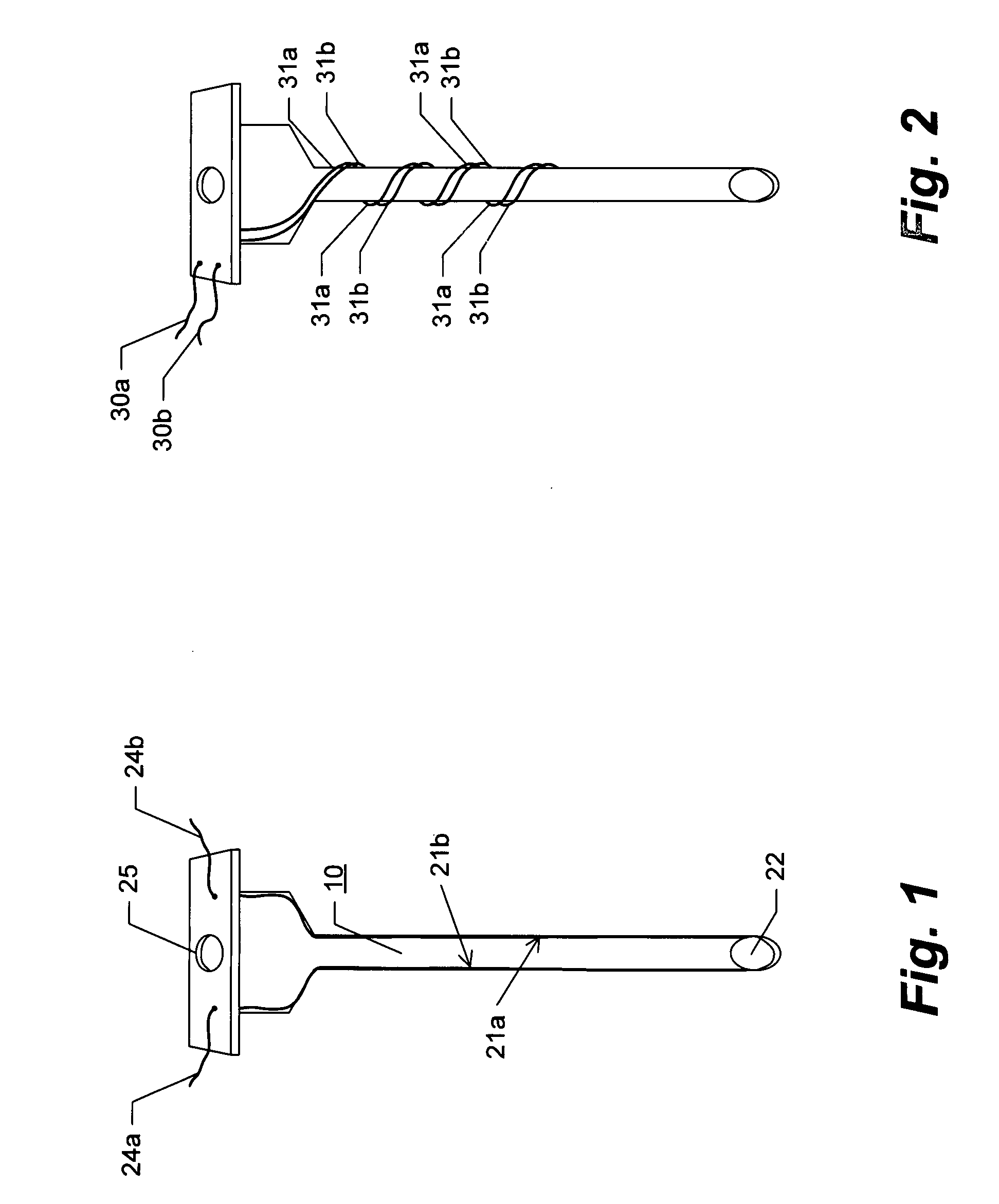Device and method for single-needle in vivo electroporation
a single-needle, in vivo technology, applied in the field of single-needle in vivo electroporation, can solve the problems of cumbersome use of such multiple-needle devices, difficult control, variability in the electroporation of cells within the treatment zone, etc., and achieve the effect of lessening the sensation of electric stimulus
- Summary
- Abstract
- Description
- Claims
- Application Information
AI Technical Summary
Benefits of technology
Problems solved by technology
Method used
Image
Examples
examples
[0057]The following examples are given to illustrate various embodiments which have been made of the present invention. It is to be understood that the following examples are not comprehensive or exhaustive of the many types of embodiments which can be prepared in accordance with the present invention.
example i
[0058]Turning now to various aspects of the invention, the device can comprise molecule delivery reservoir 20 and single-needle electrode 10 components as shown, for example, in (FIG. 5). Additional embodiments include sharps cover 11, resilient membrane 12 sealing a portion of the structure comprising the reservoir 20 for uses in filling the reservoir (such as by piercing of a syringe needle), and mechanisms such as dimples 13 and recesses 14 and 14* in the reservoir 20 housing structure for keeping the sharps cover 11 in a semi-fixed position of either open / retracted (FIG. 5C), or closed / covered (FIGS. 5A and B). Further embodiments include mechanisms for keeping the plunger 9 in a semi-fixed open / retracted or a closed / expelled position, such as, for example, dimples 15 and recesses 16 and 16*. It should be clear to one of skill in the art that regardless of the method employed to provide for semi-fixed positioning of the sharps cover 11 and plunger 9, such positioning can easily ...
example ii
[0064]In this example, results are depicted for delivering molecules by reversible poration to cells situated along and near the track formed by the insertion of the invention single-needle electrode into a tissue.
[0065]As depicted in FIGS. 11A and B, rabbit quadriceps muscle was injected with DNA encoding beta-galactosidase in a bolus comprising 0.2 ml and DNA concentration of 1 mg / ml. The electrodes were pulsed using 2 pulses of 250 mAmps, 20 millisec duration. Following electroporation, the beta-galactosidase gene was expressed in cells affected by the electroporation. At day 4 after electroporation, the rabbits were sacrificed and the muscles were prepared in 3 mm thick slices through the site on insertion of the single-needle electrode. Following chemical fixation, the beta galactosidase expressing cells in the muscle slices where visualized by an enzymatic reaction. The arrows in FIG. 11A depict the direction of the insertion of the electrode into the rabbit muscle. As shown, ...
PUM
 Login to View More
Login to View More Abstract
Description
Claims
Application Information
 Login to View More
Login to View More - R&D
- Intellectual Property
- Life Sciences
- Materials
- Tech Scout
- Unparalleled Data Quality
- Higher Quality Content
- 60% Fewer Hallucinations
Browse by: Latest US Patents, China's latest patents, Technical Efficacy Thesaurus, Application Domain, Technology Topic, Popular Technical Reports.
© 2025 PatSnap. All rights reserved.Legal|Privacy policy|Modern Slavery Act Transparency Statement|Sitemap|About US| Contact US: help@patsnap.com



